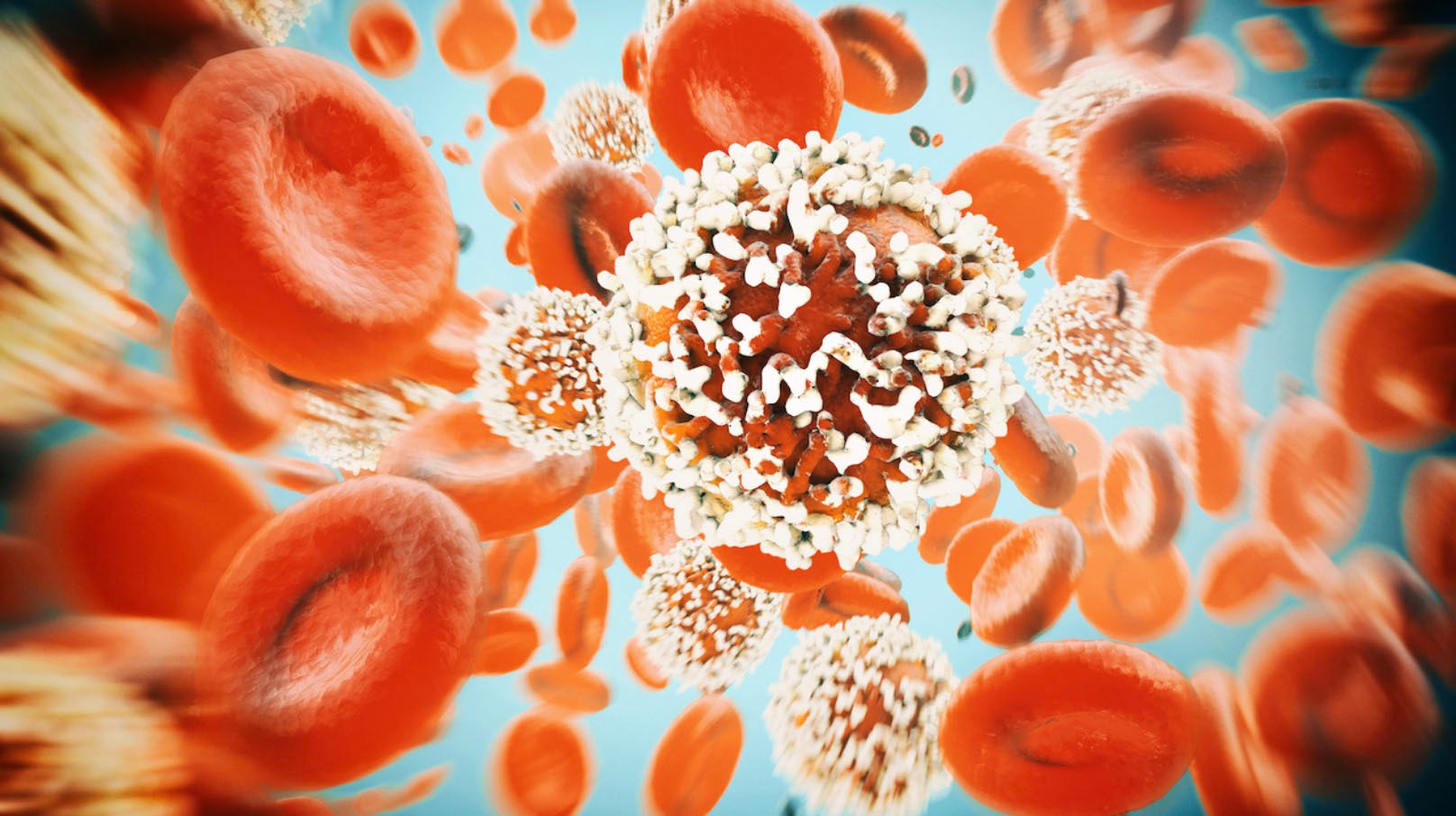Imetelstat Shows Durable Efficacy in Relapsed/Refractory Low-Risk MDS
A broad range of patients with heavily pretreated relapsed/refractory lower-risk myelodysplastic syndrome who were ineligible for treatment with an erythropoiesis-stimulating agent achieved durable red blood cell transfusion independence following treatment with the imetelstat, according to results from the phase 2 IMerge trial.

A broad range of patients with heavily pretreated relapsed/refractory lower-risk (LR) myelodysplastic syndrome (MDS) who were ineligible for treatment with an erythropoiesis-stimulating agent achieved durable red blood cell (RBC) transfusion independence following treatment with the imetelstat (GRN163L), according to results from the phase 2 IMerge clinical trial (NCT02598661).
IMErge was a multicenter, open-label, single-arm trial which was designed to determine the efficacy and safety of imetelstat in patients with LR MDS. Such a treatment is needed in this MDS population because most of the available agents that have demonstrated efficacy and tolerable safety are meant for higher-risk patients.
Thirty-eight patients with LR MDS were enrolled out of 57 patients based on the eligibility requirements of the trial. Patients were required to be 18 years of age or older with MDS per the World Health Organization (WHO) criteria and have an International Prognostic Scoring System (IPSS) low risk or intermediate-1 risk MDS and an ECOG performance status of 0 to 2.Patient had a median age of 71.0 years (range, 46-83) in the overall population and 71.5 years (range, 46-83) in the LR MDS subgroup. Most patients were male including 56% of the overall population and 66% of the subset population.
In term of risk factors shown at baseline, patients mostly had an ECOG status of 0-1, including 91% of the overall population and 89% of the subset population. TheIPSS score in the overall population was low for the majority of patients (63%), and the percentage was the same for the subset population.
When RBC transfusion burden was assessed at baseline, it was shown that the median was 7 weeks (range, 4-14) for the overall population and 8 weeks (range, 4-14) in the subset population.
Most of the patients enrolled into both the overall population and the subset population fell under a particular MDS category according to WHO criteria. Specifically, 61% of the patients in the overall population were categorized as having refractory anemia with ring sideroblasts (RARS) or refractory cytopenia with multilineage dysplasia (RCMD-RS), while the remaining 39% had either refractory amenia (RA), RCMD, or refractory anemia with excess blasts (RAEB).
In contrast, 71% of the patients in the subset population were categorized as having RARS/ RCMD-RS, and remaining 29% had either RA, RCMD, or RAEB.
Finally, prior ESA treatment was provided at baseline and showed that 90% of the overall population and 89% of the subset population were previously treated.
All patients received imetelstat 7.5 mg/kg by 2-hour intravenous infusion, which occurred every 4 weeks until disease progression, unacceptable toxicity, withdrawal of consent, or lack of response to therapy. The primary end point of the study was the was 8-week red blood cell (RBC) transfusion independence rate. The key secondary end points of the study were the 24-week RBC transfusion independence rate, transfusion independence duration, and hematologic improvement-erythroid.
Showing better efficacy than that observed in the overall population, the subset of patients with LR MDS achieved an 8-week transfusion independence rate of 42% compared with 37% in the overall population. The median time to on-set was similar in both cohorts at 8.3 (range, 0.1-40.7) for patients with LR MDS and 8.3 (range, 0.1-100.6) in the overall population. The median duration of transfusion independence was also longer in patients with LR MDS at 85.9 weeks (range, 8.0-140.9) versus 65 weeks (range, 17.0-140.9) in the overall population.
At 24 weeks, the LR MDS subset had a transfusion independence rate of 29% compared with 23% in the overall population.
Other efficacy results explored in this study included the hematologic improvement – erythropoietic (HI-E) percentage, transfusion reduction, and major/minor response at the 8- and 16-week marks. The subset population demonstrated a HI-E of 32% compared with 26% in the overall population. In addition, the transfusion reduction was 68% for the subset population versus 65% for the overall population. Major responses were observed in 37% of the subset population and 28% of the overall population at 16 weeks, and at 8 weeks, major responses were observed in 42% and 37%, respectively. Minor responses to imetelstat were observed in 53% of patients with LR MDS compared with 49% of the overall population.
The safety results that hematologic adverse events (AEs) of any grade occurred in greater than 20% of patients in entire study population. The most common any-grade hematologic AEs in the overall and subgroup populations were thrombocytopenia (61% vs. 66%), neutropenia (67% vs. 56%), and anemia (23% vs. 26%), respectively. Any-grade non-hematologic AEs wereobserved in greater than 15% of patients in the study. The most common in the overall population were headache (21%) and alanine aminotransferase (ALT) increased (18%). In the subset of patients with LR MDS, the most common any-grade non-hematologic AEs were back pain (18%) and ALT increase (18 %).
It was concluded from these efficacy and safety data from IMErge that imetelstat induced meaningful and durable transfusion independence and a high HI-E rate in an LR MDS population heavy RBC-dependency who were relapsed/refractory to ESA treatment. The benefit observed with imetelstat in this patients population was irrespective of presence of ringed sideroblasts, according to the biomarker analysis.
Reference:
Steensma DP, Fenaux P, Eyge KV, et al. Imetelstat achieves meaningful and durable transfusion independence in high transfusion–burden patients with lower-risk myelodysplastic syndromes in a phase II study. J Clin Oncol. Published online September 25, 2020.










